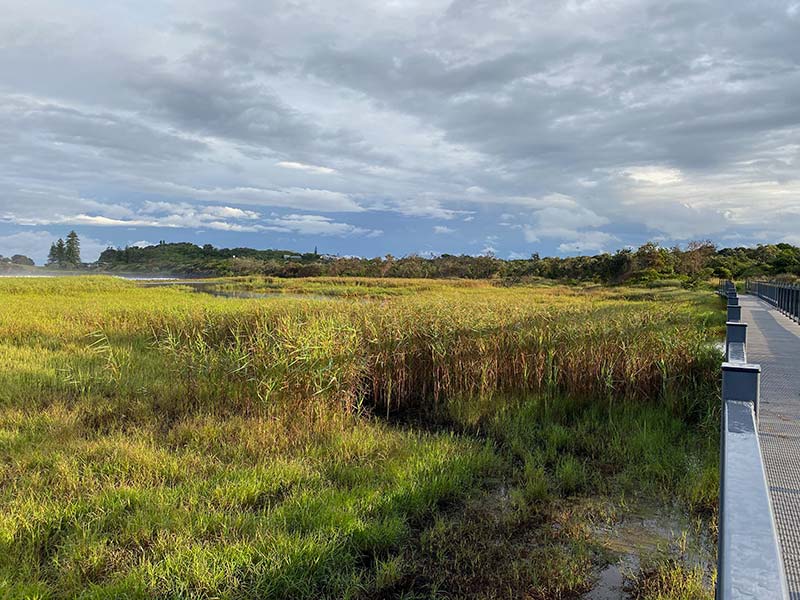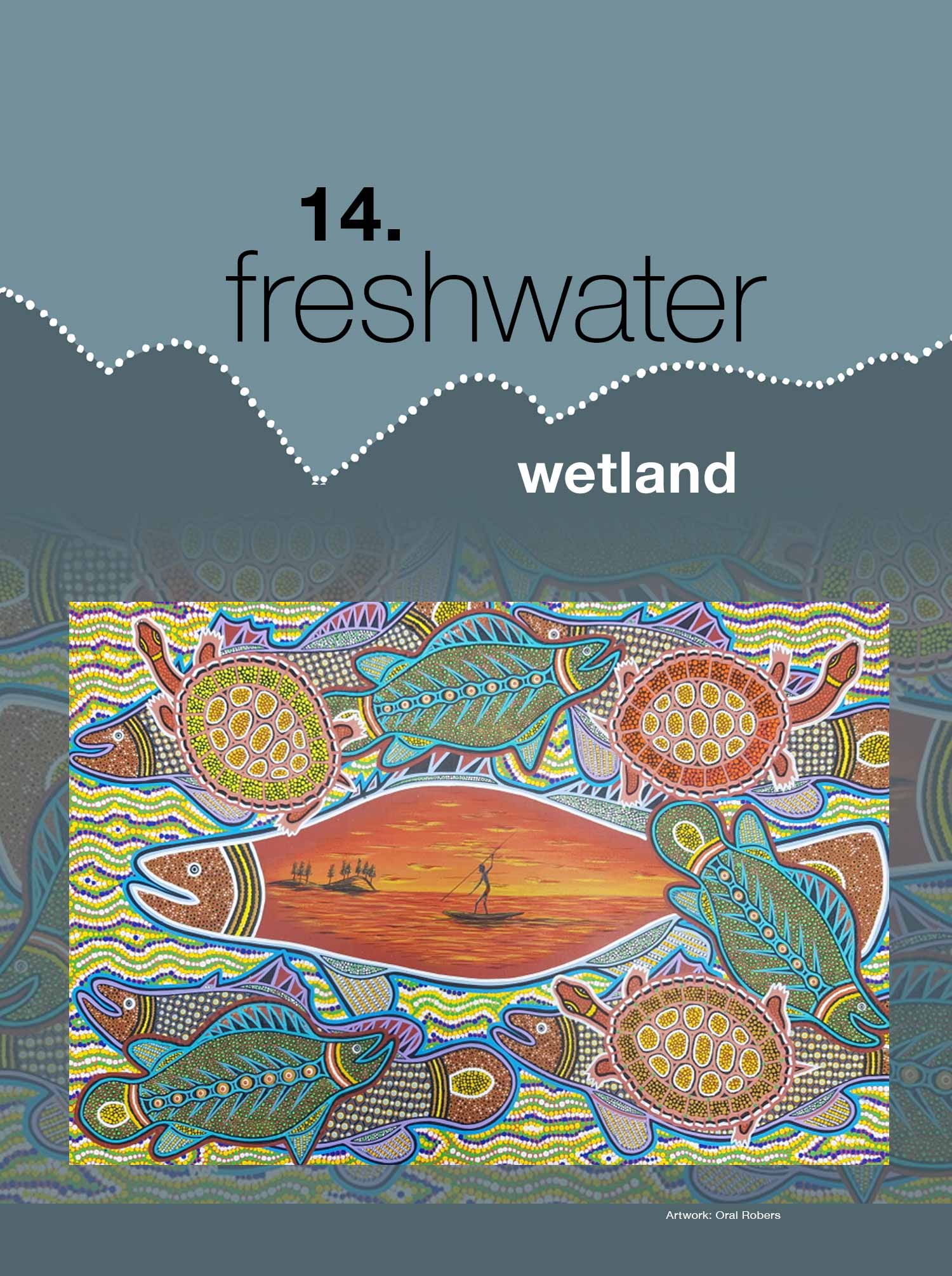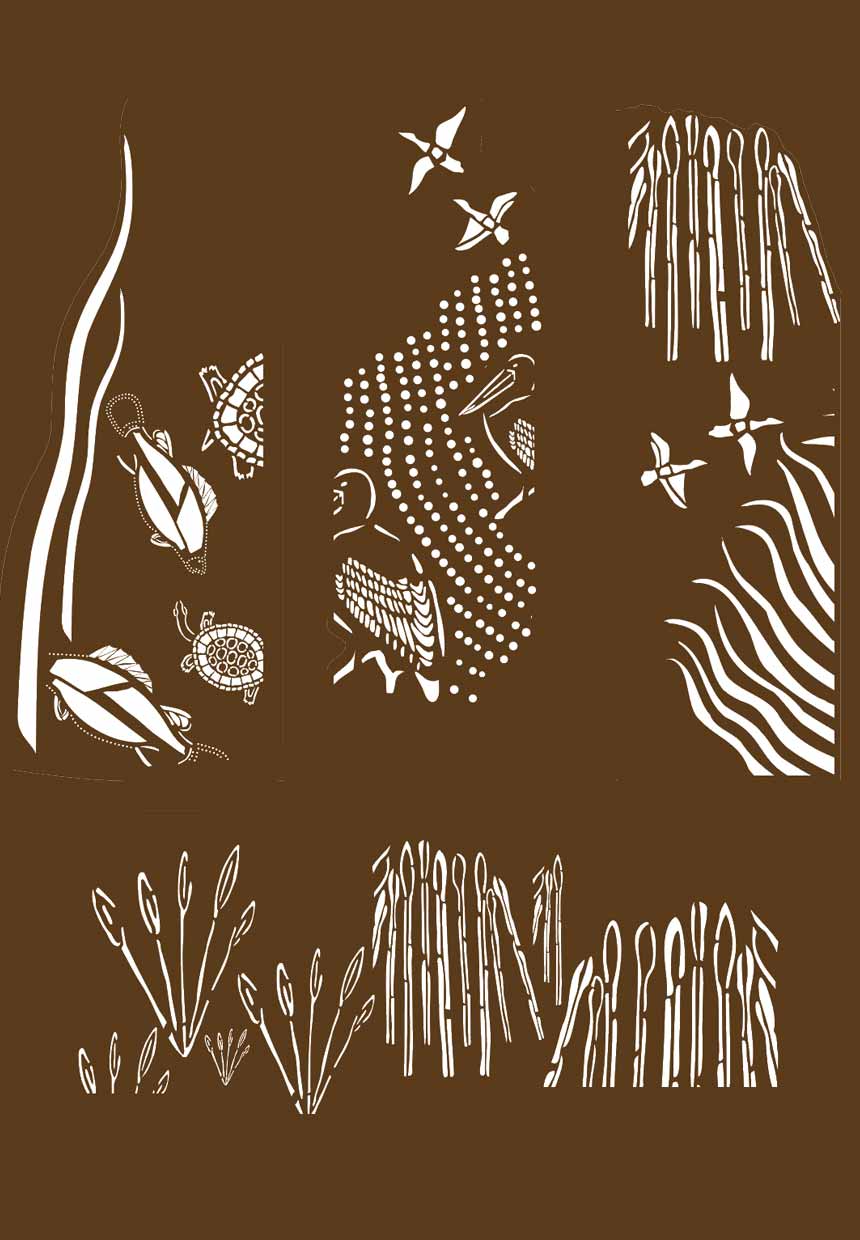The title of this artwork is ‘Hunting and Gathering’ . The artist Oral Roberts describes it as being about fishing for blue cod.
Along the Coastal Walk ...

Walking across the wetland today it’s easy to imagine Aboriginal people gathering food and water in this place in the past. We can do this thanks to the major rehabilitation efforts recently undertaken here. These mitigate the lingering impacts resulting from sand mining operations undertaken amongst the Boulder Beach foredunes between the 1940s–70s.
Healing Country
We can get some idea of the impacts that 1950s sand mining had on this place from an archival photo provided by the Lennox Head Heritage Committee. It shows how the mining decimated both the beach dune structures and the wetland community that once flourished behind this protective sand wall.

A major criticism of sand mining across the 1960s was the extent to which there was little if any obligation on the mining company to rehabilitate the beach landscape once mining was completed. We can see the evidence of this from an 1961 photo taken once the miners had moved on.

It only thanks to ongoing community efforts along this section of coastline north from Angels Beach to Lennox Head from the 1980s onwards that images such as this no longer confront us today. You can see dramatic evidence of this in the comparison of aerial photos of this place taken in 1973 and then in 2018.

The scale of works undertaken at Lennox Head over this time to repair the impacts of both sand mining and agricultural clearing is shown in the diagram below indicating how year on year programs gradually worked to revegetate much of ground here. The patchwork nature of the forest that was created is intentional as open grasslands are also an integral part of the natural vegetation coverage of this country.

Standing today on the pathway we can see how Country has recovered and is still healing from these cumulative impacts causing environmental tragedies and additionally, the decimation of cultural sites for local Aboriginal people. However, even in highly disturbed landscape contexts, we also see that Aboriginal cultural sites, such as middens and artefact scatters still survive.
Disturbed landscapes can be traumatic for Aboriginal people as reminders of the destruction of cultural heritage. However as Marcus Ferguson explains “although these places have been impacted, they remain culturally active landscapes for our people.”




 Metal panel artwork credits: Oral Roberts, Lois Cook, Bunjum Salt Water Women Art Group.
Metal panel artwork credits: Oral Roberts, Lois Cook, Bunjum Salt Water Women Art Group.